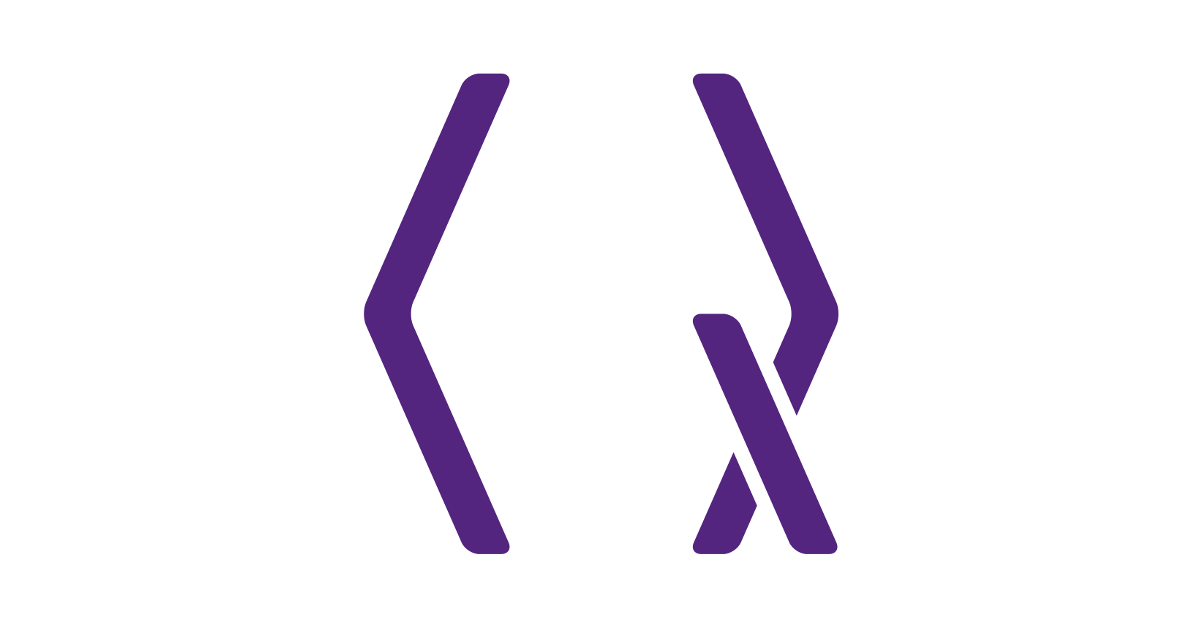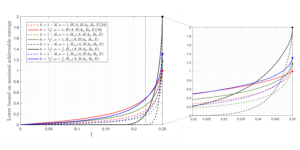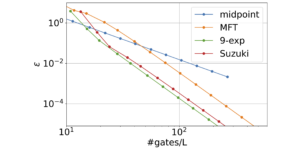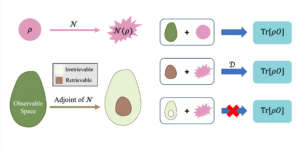
1Institute of Mathematics, University of Silesia in Katowice, Bankowa 14, 40-007 Katowice, Poland
2Institute of Theoretical and Applied Informatics, Polish Academy of Sciences, Bałtycka 5, 44-100 Gliwice, Poland
3Faculty of Physics, Astronomy and Applied Computer Science, Jagiellonian University, 30-348 Kraków, Poland
Find this paper interesting or want to discuss? Scite or leave a comment on SciRate.
Abstract
In this paper we aim to push the analogy between thermodynamics and quantum resource theories one step further. Previous inspirations were based predominantly on thermodynamic considerations concerning scenarios with a single heat bath, neglecting an important part of thermodynamics that studies heat engines operating between two baths at different temperatures. Here, we investigate the performance of resource engines, which replace the access to two heat baths at different temperatures with two arbitrary constraints on state transformations. The idea is to imitate the action of a two–stroke heat engine, where the system is sent to two agents (Alice and Bob) in turns, and they can transform it using their constrained sets of free operations. We raise and address several questions, including whether or not a resource engine can generate a full set of quantum operations or all possible state transformations, and how many strokes are needed for that. We also explain how the resource engine picture provides a natural way to fuse two or more resource theories, and we discuss in detail the fusion of two resource theories of thermodynamics with two different temperatures, and two resource theories of coherence with respect to two different bases.
► BibTeX data
► References
[1] Paul CW Davies. “Thermodynamics of black holes”. Rep. Prog. Phys. 41, 1313 (1978).
https://doi.org/10.1088/0034-4885/41/8/004
[2] Daniel M Zuckerman. “Statistical physics of biomolecules: An introduction”. CRC Press. (2010).
https://doi.org/10.1201/b18849
[3] Evgenii Mikhailovich Lifshitz and Lev Petrovich Pitaevskii. “Statistical physics: Theory of the condensed state”. Volume 9. Elsevier. (1980).
https://doi.org/10.1016/C2009-0-24308-X
[4] Charles H Bennett. “The thermodynamics of computation—a review”. Int. J. Theor. Phys. 21, 905–940 (1982).
https://doi.org/10.1007/BF02084158
[5] Robin Giles. “Mathematical foundations of thermodynamics”. Pergamon Press. (1964).
https://doi.org/10.1016/C2013-0-05320-0
[6] Eric Chitambar and Gilad Gour. “Quantum resource theories”. Rev. Mod. Phys. 91, 025001 (2019).
https://doi.org/10.1103/RevModPhys.91.025001
[7] Ryszard Horodecki, Paweł Horodecki, Michał Horodecki, and Karol Horodecki. “Quantum entanglement”. Rev. Mod. Phys. 81, 865–942 (2009).
https://doi.org/10.1103/RevModPhys.81.865
[8] T. Baumgratz, M. Cramer, and M. B. Plenio. “Quantifying coherence”. Phys. Rev. Lett. 113, 140401 (2014).
https://doi.org/10.1103/PhysRevLett.113.140401
[9] I. Marvian. “Symmetry, asymmetry and quantum information”. PhD thesis. University of Waterloo. (2012). url: https://uwspace.uwaterloo.ca/handle/10012/7088.
https://uwspace.uwaterloo.ca/handle/10012/7088
[10] Victor Veitch, SA Hamed Mousavian, Daniel Gottesman, and Joseph Emerson. “The resource theory of stabilizer quantum computation”. New J. Phys. 16, 013009 (2014).
https://doi.org/10.1088/1367-2630/16/1/013009
[11] Charles H Bennett, Herbert J Bernstein, Sandu Popescu, and Benjamin Schumacher. “Concentrating partial entanglement by local operations”. Phys. Rev. A 53, 2046 (1996).
https://doi.org/10.1103/PhysRevA.53.2046
[12] SJ van Enk. “Quantifying the resource of sharing a reference frame”. Phys. Rev. A 71, 032339 (2005).
https://doi.org/10.1103/PhysRevA.71.032339
[13] Eric Chitambar and Min-Hsiu Hsieh. “Relating the resource theories of entanglement and quantum coherence”. Phys. Rev. Lett. 117, 020402 (2016).
https://doi.org/10.1103/PhysRevLett.117.020402
[14] Daniel Jonathan and Martin B Plenio. “Entanglement-assisted local manipulation of pure quantum states”. Phys. Rev. Lett. 83, 3566 (1999).
https://doi.org/10.1103/PhysRevLett.83.3566
[15] Kaifeng Bu, Uttam Singh, and Junde Wu. “Catalytic coherence transformations”. Phys. Rev. A 93, 042326 (2016).
https://doi.org/10.1103/PhysRevA.93.042326
[16] Michał Horodecki, Jonathan Oppenheim, and Ryszard Horodecki. “Are the laws of entanglement theory thermodynamical?”. Phys. Rev. Lett. 89, 240403 (2002).
https://doi.org/10.1103/PhysRevLett.89.240403
[17] Tomáš Gonda and Robert W Spekkens. “Monotones in general resource theories”. Compositionality 5 (2023).
https://doi.org/10.32408/compositionality-5-7
[18] Fernando GSL Brandao and Martin B Plenio. “Entanglement theory and the second law of thermodynamics”. Nat. Phys. 4, 873–877 (2008).
https://doi.org/10.1038/nphys1100
[19] Wataru Kumagai and Masahito Hayashi. “Entanglement concentration is irreversible”. Phys. Rev. Lett. 111, 130407 (2013).
https://doi.org/10.1103/PhysRevLett.111.130407
[20] Kamil Korzekwa, Christopher T Chubb, and Marco Tomamichel. “Avoiding irreversibility: Engineering resonant conversions of quantum resources”. Phys. Rev. Lett. 122, 110403 (2019).
https://doi.org/10.1103/PhysRevLett.122.110403
[21] Ludovico Lami and Bartosz Regula. “No second law of entanglement manipulation after all”. Nat. Phys. 19, 184–189 (2023).
https://doi.org/10.1038/s41567-022-01873-9
[22] Nelly Huei Ying Ng, Mischa Prebin Woods, and Stephanie Wehner. “Surpassing the Carnot efficiency by extracting imperfect work”. New J. Phys. 19, 113005 (2017).
https://doi.org/10.1088/1367-2630/aa8ced
[23] Hiroyasu Tajima and Masahito Hayashi. “Finite-size effect on optimal efficiency of heat engines”. Phys. Rev. E 96, 012128 (2017).
https://doi.org/10.1103/PhysRevE.96.012128
[24] Mohit Lal Bera, Maciej Lewenstein, and Manabendra Nath Bera. “Attaining Carnot efficiency with quantum and nanoscale heat engines”. Npj Quantum Inf. 7 (2021).
https://doi.org/10.1038/s41534-021-00366-6
[25] Friedemann Tonner and Günter Mahler. “Autonomous quantum thermodynamic machines”. Phys. Rev. E 72, 066118 (2005).
https://doi.org/10.1103/PhysRevE.72.066118
[26] Mark T Mitchison. “Quantum thermal absorption machines: Refrigerators, engines and clocks”. Contemp. Phys. 60, 164–187 (2019).
https://doi.org/10.1080/00107514.2019.1631555
[27] M. Lostaglio, D. Jennings, and T. Rudolph. “Description of quantum coherence in thermodynamic processes requires constraints beyond free energy”. Nat. Commun. 6, 6383 (2015).
https://doi.org/10.1038/ncomms7383
[28] M. Horodecki and J. Oppenheim. “Fundamental limitations for quantum and nanoscale thermodynamics”. Nat. Commun. 4, 2059 (2013).
https://doi.org/10.1038/ncomms3059
[29] D. Janzing, P. Wocjan, R. Zeier, R. Geiss, and Th. Beth. “Thermodynamic cost of reliability and low temperatures: tightening Landauer’s principle and the second law”. Int. J. Theor. Phys. 39, 2717–2753 (2000).
https://doi.org/10.1023/A:1026422630734
[30] E. Ruch, R. Schranner, and T.H. Seligman. “Generalization of a theorem by Hardy, Littlewood, and Pólya”. J. Math. Anal. Appl. 76, 222–229 (1980).
https://doi.org/10.1016/0022-247X(80)90075-X
[31] Matteo Lostaglio, David Jennings, and Terry Rudolph. “Thermodynamic resource theories, non-commutativity and maximum entropy principles”. New J. Phys. 19, 043008 (2017).
https://doi.org/10.1088/1367-2630/aa617f
[32] Matteo Lostaglio, Álvaro M Alhambra, and Christopher Perry. “Elementary thermal operations”. Quantum 2, 52 (2018).
https://doi.org/10.22331/q-2018-02-08-52
[33] J. Åberg. “Quantifying superposition” (2006). arXiv:quant-ph/0612146.
arXiv:quant-ph/0612146
[34] Alexander Streltsov, Gerardo Adesso, and Martin B Plenio. “Colloquium: Quantum coherence as a resource”. Rev. Mod. Phys. 89, 041003 (2017).
https://doi.org/10.1103/RevModPhys.89.041003
[35] Viswanath Ramakrishna, Kathryn L. Flores, Herschel Rabitz, and Raimund J. Ober. “Quantum control by decompositions of SU(2)”. Phys. Rev. A 62, 053409 (2000).
https://doi.org/10.1103/PhysRevA.62.053409
[36] Seth Lloyd. “Almost any quantum logic gate is universal”. Phys. Rev. Lett. 75, 346 (1995).
https://doi.org/10.1103/PhysRevLett.75.346
[37] Nik Weaver. “On the universality of almost every quantum logic gate”. J. Math. Phys. 41, 240–243 (2000).
https://doi.org/10.1063/1.533131
[38] F. Lowenthal. “Uniform finite generation of the rotation group”. Rocky Mt. J. Math. 1, 575–586 (1971).
https://doi.org/10.1216/RMJ-1971-1-4-575
[39] F. Lowenthal. “Uniform finite generation of SU(2) and SL(2, R)”. Canad. J. Math. 24, 713–727 (1972).
https://doi.org/10.4153/CJM-1972-067-x
[40] M. Hamada. “The minimum number of rotations about two axes for constructing an arbitrarily fixed rotation”. R. Soc. Open Sci. 1 (2014).
https://doi.org/10.1098/rsos.140145
[41] K. Korzekwa, D. Jennings, and T. Rudolph. “Operational constraints on state-dependent formulations of quantum error-disturbance trade-off relations”. Phys. Rev. A 89, 052108 (2014).
https://doi.org/10.1103/PhysRevA.89.052108
[42] Martin Idel and Michael M. Wolf. “Sinkhorn normal form for unitary matrices”. Linear Algebra Appl. 471, 76–84 (2015).
https://doi.org/10.1016/j.laa.2014.12.031
[43] Z. Puchała, Ł. Rudnicki, K. Chabuda, M. Paraniak, and K. Życzkowski. “Certainty relations, mutual entanglement, and nondisplaceable manifolds”. Phys. Rev. A 92, 032109 (2015).
https://doi.org/10.1103/PhysRevA.92.032109
[44] Z.I. Borevich and S.L. Krupetskij. “Subgroups of the unitary group that contain the group of diagonal matrices”. J. Sov. Math. 17, 1718–1730 (1981).
https://doi.org/10.1007/BF01465451
[45] M. Schmid, R. Steinwandt, J. Müller-Quade, M. Rötteler, and T. Beth. “Decomposing a matrix into circulant and diagonal factors”. Linear Algebra Appl. 306, 131–143 (2000).
https://doi.org/10.1016/S0024-3795(99)00250-5
[46] O. Häggström. “Finite Markov chains and algorithmic applications”. London Mathematical Society Student Texts. Cambridge University Press. (2002).
https://doi.org/10.1017/CBO9780511613586
[47] Víctor López Pastor, Jeff Lundeen, and Florian Marquardt. “Arbitrary optical wave evolution with Fourier transforms and phase masks”. Opt. Express 29, 38441–38450 (2021).
https://doi.org/10.1364/OE.432787
[48] Marko Huhtanen and Allan Perämäki. “Factoring matrices into the product of circulant and diagonal matrices”. J. Fourier Anal. Appl. 21, 1018–1033 (2015).
https://doi.org/10.1007/s00041-015-9395-0
[49] Carlo Sparaciari, Lídia Del Rio, Carlo Maria Scandolo, Philippe Faist, and Jonathan Oppenheim. “The first law of general quantum resource theories”. Quantum 4, 259 (2020).
https://doi.org/10.22331/q-2020-04-30-259
[50] Ryuji Takagi and Bartosz Regula. “General resource theories in quantum mechanics and beyond: Operational characterization via discrimination tasks”. Phys. Rev. X 9, 031053 (2019).
https://doi.org/10.1103/PhysRevX.9.031053
[51] Roy Araiza, Yidong Chen, Marius Junge, and Peixue Wu. “Resource-dependent complexity of quantum channels” (2023). arXiv:2303.11304.
arXiv:2303.11304
[52] Luciano Pereira, Alejandro Rojas, Gustavo Cañas, Gustavo Lima, Aldo Delgado, and Adán Cabello. “Minimum optical depth multi-port interferometers for approximating any unitary transformation and any pure state” (2020). arXiv:2002.01371.
arXiv:2002.01371
[53] Bryan Eastin and Emanuel Knill. “Restrictions on transversal encoded quantum gate sets”. Phys. Rev. Lett. 102, 110502 (2009).
https://doi.org/10.1103/PhysRevLett.102.110502
[54] Jonas T Anderson, Guillaume Duclos-Cianci, and David Poulin. “Fault-tolerant conversion between the Steane and Reed-Muller quantum codes”. Phys. Rev. Lett. 113, 080501 (2014).
https://doi.org/10.1103/PhysRevLett.113.080501
[55] Tomas Jochym-O’Connor and Raymond Laflamme. “Using concatenated quantum codes for universal fault-tolerant quantum gates”. Phys. Rev. Lett. 112, 010505 (2014).
https://doi.org/10.1103/PhysRevLett.112.010505
[56] Antonio Acín, J Ignacio Cirac, and Maciej Lewenstein. “Entanglement percolation in quantum networks”. Nat. Phys. 3, 256–259 (2007).
https://doi.org/10.1038/nphys549
[57] H Jeff Kimble. “The quantum internet”. Nature 453, 1023–1030 (2008).
https://doi.org/10.1038/nature07127
[58] Sébastien Perseguers, GJ Lapeyre, D Cavalcanti, M Lewenstein, and A Acín. “Distribution of entanglement in large-scale quantum networks”. Rep. Prog. Phys. 76, 096001 (2013).
https://doi.org/10.1088/0034-4885/76/9/096001
[59] C.-H. Cho. “Holomorphic discs, spin structures, and Floer cohomology of the Clifford torus”. Int. Math. Res. Notices 2004, 1803–1843 (2004).
https://doi.org/10.1155/S1073792804132716
[60] S.A. Marcon. “Markov chains: A graph theoretical approach”. Master’s thesis. University of Johannesburg. (2012). url: https://ujcontent.uj.ac.za/esploro/outputs/999849107691.
https://ujcontent.uj.ac.za/esploro/outputs/999849107691
Cited by
[1] Kohdai Kuroiwa, Ryuji Takagi, Gerardo Adesso, and Hayata Yamasaki, “Every quantum helps: Operational advantage of quantum resources beyond convexity”, arXiv:2310.09154, (2023).
[2] Kohdai Kuroiwa, Ryuji Takagi, Gerardo Adesso, and Hayata Yamasaki, “Robustness and weight resource measures without convexity restriction: Multicopy witness and operational advantage in static and dynamical quantum resource theories”, arXiv:2310.09321, (2023).
[3] Gökhan Torun, Onur Pusuluk, and Özgür E. Müstecaplıoğlu, “A Compendious Review of Majorization-Based Resource Theories: Quantum Information and Quantum Thermodynamics”, arXiv:2306.11513, (2023).
The above citations are from SAO/NASA ADS (last updated successfully 2024-01-11 14:12:48). The list may be incomplete as not all publishers provide suitable and complete citation data.
On Crossref’s cited-by service no data on citing works was found (last attempt 2024-01-11 14:12:46).
This Paper is published in Quantum under the Creative Commons Attribution 4.0 International (CC BY 4.0) license. Copyright remains with the original copyright holders such as the authors or their institutions.
- SEO Powered Content & PR Distribution. Get Amplified Today.
- PlatoData.Network Vertical Generative Ai. Empower Yourself. Access Here.
- PlatoAiStream. Web3 Intelligence. Knowledge Amplified. Access Here.
- PlatoESG. Carbon, CleanTech, Energy, Environment, Solar, Waste Management. Access Here.
- PlatoHealth. Biotech and Clinical Trials Intelligence. Access Here.
- Source: https://quantum-journal.org/papers/q-2024-01-10-1222/
- :is
- :not
- :where
- ][p
- 1
- 10
- 11
- 12
- 13
- 14
- 15%
- 16
- 17
- 19
- 1981
- 1995
- 1996
- 1999
- 20
- 2000
- 2005
- 2006
- 2008
- 2012
- 2013
- 2014
- 2015
- 2016
- 2017
- 2018
- 2019
- 2020
- 2021
- 2023
- 22
- 23
- 24
- 25
- 26%
- 27
- 28
- 29
- 30
- 31
- 32
- 33
- 35%
- 36
- 39
- 40
- 41
- 43
- 49
- 50
- 51
- 54
- 58
- 60
- 7
- 72
- 75
- 8
- 80
- 9
- 91
- a
- About
- above
- ABSTRACT
- AC
- Academy
- access
- Action
- address
- ADvantage
- affiliations
- After
- agents
- aim
- Alexander
- algorithmic
- alice
- All
- almost
- also
- an
- and
- anderson
- any
- applications
- applied
- approach
- ARE
- AS
- astronomy
- At
- attempt
- author
- authors
- AXES
- based
- BE
- Benjamin
- Bernstein
- beth
- between
- Beyond
- Black
- black holes
- bob
- Break
- Bryan
- by
- cambridge
- CAN
- chains
- channels
- Charles
- chen
- CHO
- Christopher
- Chubb
- Clocks
- codes
- comment
- Commons
- complete
- complexity
- computation
- computer
- computer science
- concentration
- concerning
- considerations
- constraints
- constructing
- contain
- control
- Conversion
- conversions
- copyright
- Cost
- CRC
- Daniel
- data
- David
- del
- depth
- detail
- different
- discuss
- e
- effect
- efficiency
- encoded
- energy
- Engine
- Engineering
- Engines
- entanglement
- eric
- Every
- evolution
- Explain
- express
- factors
- First
- fixed
- For
- form
- found
- Foundations
- FRAME
- Free
- from
- full
- further
- fusion
- gate
- Gates
- General
- generate
- generation
- graph
- Group
- harvard
- helps
- here
- holders
- Holes
- How
- HTTPS
- i
- idea
- important
- in
- Including
- information
- inspirations
- institutions
- interesting
- International
- Internet
- into
- Introduction
- investigate
- IT
- Jan
- JavaScript
- jennings
- johannesburg
- jonathan
- journal
- large-scale
- Last
- Law
- Laws
- Leave
- License
- limitations
- List
- local
- logic
- London
- Low
- Machines
- Manipulation
- many
- Marco
- maria
- mark
- Martin
- Masks
- master
- math
- mathematical
- mathematics
- Matrix
- maximum
- May..
- measures
- mechanics
- Michael
- minimum
- Month
- more
- MT
- mutual
- Natural
- Nature
- needed
- neglecting
- networks
- New
- no
- normal
- number
- of
- on
- ONE
- open
- operating
- operational
- Operations
- optimal
- or
- original
- pages
- Paper
- part
- Paul
- performance
- phase
- phd
- Philippe
- Physics
- picture
- plato
- Plato Data Intelligence
- PlatoData
- Polish
- possible
- predominantly
- press
- previous
- principle
- principles
- processes
- Product
- provide
- provides
- published
- publisher
- publishers
- Push
- Quantum
- quantum gate
- quantum information
- Quantum Internet
- Quantum Mechanics
- quantum networks
- Questions
- R
- raise
- reference
- references
- relations
- reliability
- remains
- replace
- requires
- resource
- Resources
- respect
- restriction
- review
- ROBERT
- Robin
- robustness
- rocky
- roy
- s
- SA
- scenarios
- SCI
- Science
- SCIENCES
- Second
- sent
- set
- Sets
- several
- sharing
- single
- Society
- SOV
- Spin
- State
- States
- static
- Step
- STEPHANIE
- structures
- Student
- studies
- Successfully
- such
- suitable
- superposition
- system
- tasks
- that
- The
- their
- theoretical
- theory
- thermal
- thesis
- they
- this
- tightening
- Title
- to
- Transform
- Transformation
- transformations
- transforms
- turns
- two
- under
- Universal
- university
- updated
- URL
- using
- via
- volume
- W
- want
- was
- Wave
- Way..
- we
- weight
- were
- whether
- which
- with
- without
- witness
- Wolf
- Woods
- Work
- works
- wu
- X
- year
- YING
- zephyrnet












